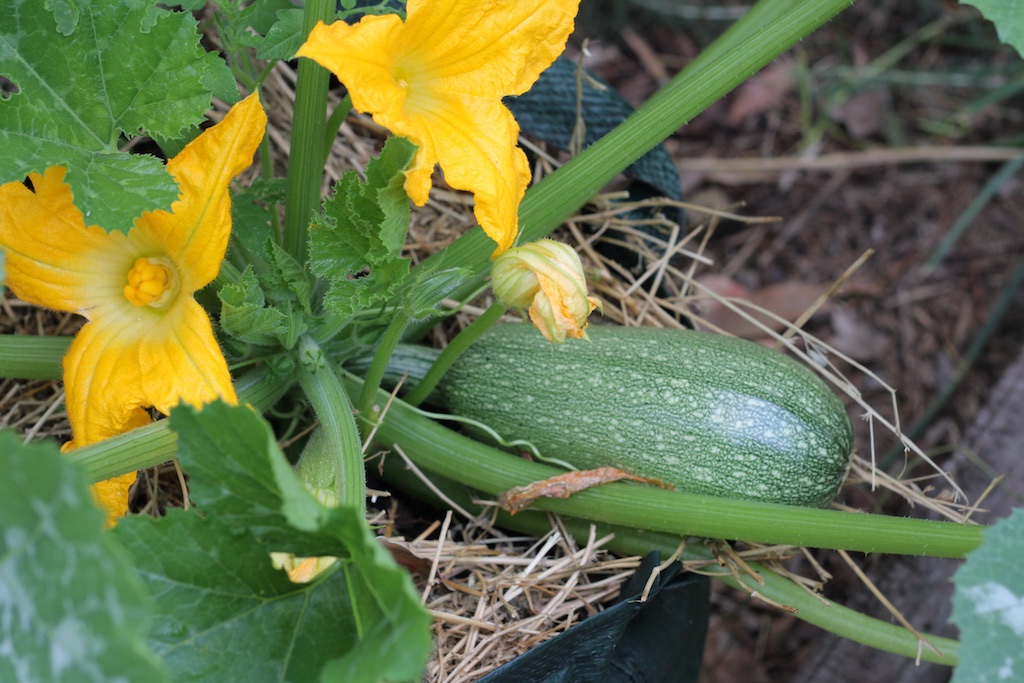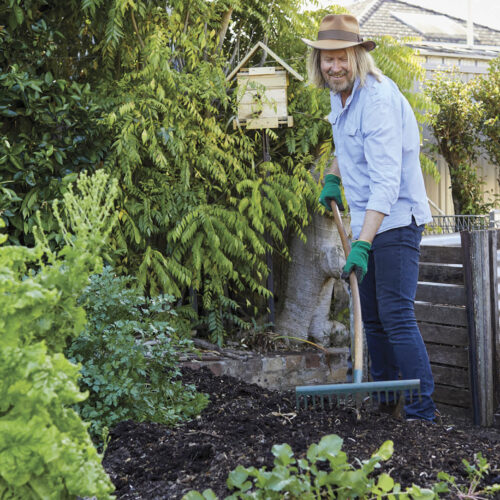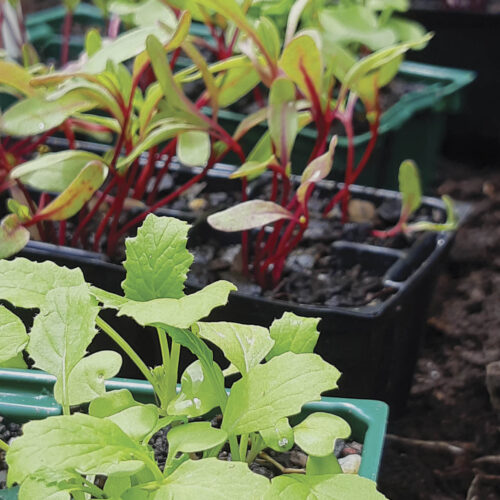Starting a vegie garden
2017-10-29T23:40:49+11:00
It's not too late, says Penny Woodward, to plant vegies for summer harvesting.
Daylight saving, longer days, warmer weather. Summer is definitely on the way, which to me means fresh vegies from the garden! We can argue until the cows come home about whether homegrown is healthier than bought, organic better than produce grown using chemical fertilisers and pesticides (I’m absolutely sure that a resounding yes is the answer to both), but no-one can argue against the fact that homegrown tastes better! So what about starting a small vegetable garden and growing a few basic, easy-to-grow, relatively tough vegetable plants? Those with busy lives, or those who spend their free time travelling between a weekender or holiday house and home, would probably say that it’s all too much trouble and the plants wouldn’t survive anyway. But if you really yearn for the unique taste of your own homegrown vegies there are ways of ensuring the survival of your plants and a bountiful harvest.
To begin with starting a vegie garden, grow only the tougher, more prolific plants so that you don’t spend the summer watering an eggplant that only yields half-a-dozen fruit. Beans, especially some of the older climbing varieties, produce week after week, right through the season. My favourites are ‘Lazy Housewife’, ‘Painted Lady’ and ‘Purple King’. If you don’t have a suitable fence, grow them up a tripod made from three long sticks tied together. Plant two or three seeds at the base of each stick. Other vegetables well worth growing are some of the smaller fruiting tomatoes (‘Tommy Toe’, ‘Tigerella’ and any cherry or small pear cultivars) and perennial chilli plants.
As for leafy vegetables, if you’re not a regular gardener then I wouldn’t bother with most of the lettuces, unless you’ve got a pot in a shaded position. They do need regular water to produce succulent green leaves. However, leafy plants in the mustard family are well worth planting, especially mizuna. Also plants such as chicory, rocket and silverbeet (the coloured forms are delicious, decorative and especially tough) will survive water stress and still provide delicious green leaves for summer salads. Silverbeet leaves can also be cooked as a tasty vegetable.
The other vegetables to consider in starting a vegie garden if you have a bit more space are marrows (especially zucchini, which will grow in big pots, see picture) and pumpkin. Currently my favourite pumpkins are ‘Ironbark’, ‘Buttercup’ and ‘Queensland Blue’. Last year my ‘Ironbark’ tolerated intermittent watering and still produced numerous delicious, bright-orange-fleshed pumpkins with rock-hard skins that protect them from consumption by bush rats and mean they can be stored for months and months without spoiling.
The time-poor gardener should as far as possible avoid growing plants from seed — buy seedlings or well-established small plants. If seed dries out even for a short time, once it has sprouted, it will die. If you have to grow plants from seed, try to plant them when you will be around for a while, or when cooler, moist weather is expected. If you are established in one place for the whole of the holidays, it may also be worth growing some of the faster-growing vegies from seed — for example radishes and carrots (‘Baby’, ‘Mini Round’). This can be a good way of occupying the kids on one of those unseasonally cool days that we can have in December. Sow the seeds into potting mix in one of the white foam containers that can be collected from greengrocers or supermarkets and they will produce edible roots in a few weeks.
All vegetables need a sunny position and, if you can only provide sun for half a day, morning sun (the east-side of the house) is better than the very hot afternoon sun.
Decide if you want to grow your plants in pots or in the garden. If pots, then you will need to set up a drip-watering system with a timer, this is especially important if you are growing your vegies at a holiday house that you visit irregularly. (With any luck timer manufacturers will by now have learnt to write their instructions in plain English so you’ll be able to understand how they work). Alternatives to drip systems are to up-end 2L plastic bottles full of water next to each plant — the water slowly drains out over several days — or purchase self-watering tree guards for each plant, these are fairly expensive but can be used over several seasons. If you are growing your vegies in the garden, you will still need to provide regular water, but the ground does not dry out as quickly so it is not as big a problem. When buying potting mix for containers, choose the best you can afford and add compost, blood and bone and water-retaining coir.
If you want to grow your vegetables in the garden, they are best confined to one area. This makes watering much simpler in starting a vegie garden. Dig in compost, blood and bone and/or some organic complete fertiliser.
To protect newly planted seedlings, cut the bottom out of a plastic pot and place it over the seedling. This will stop birds from scratching the seedling out of the ground when you are not around and will help direct water to the roots while plants are small. The final essential is mulch. Mulch dramatically reduces the volume of water needed. My favourite mulches are pea or lucerne straw. They have very few weed problems and since they don’t reduce the nitrogen in the soil as they break down, they won’t affect the fertility of the soil.
To help reduce pest problems, scatter a few strongly scented herbs among your vegetables — lavender, oregano, parsley, sage and rosemary are all suitable. Also consider adding a few flowers, nasturtiums — their flowers, leaves and green seeds are all edible, marigolds — their petals are great in summer salads and sunflowers. They will all provide a welcoming splash of colour right through summer and autumn.






